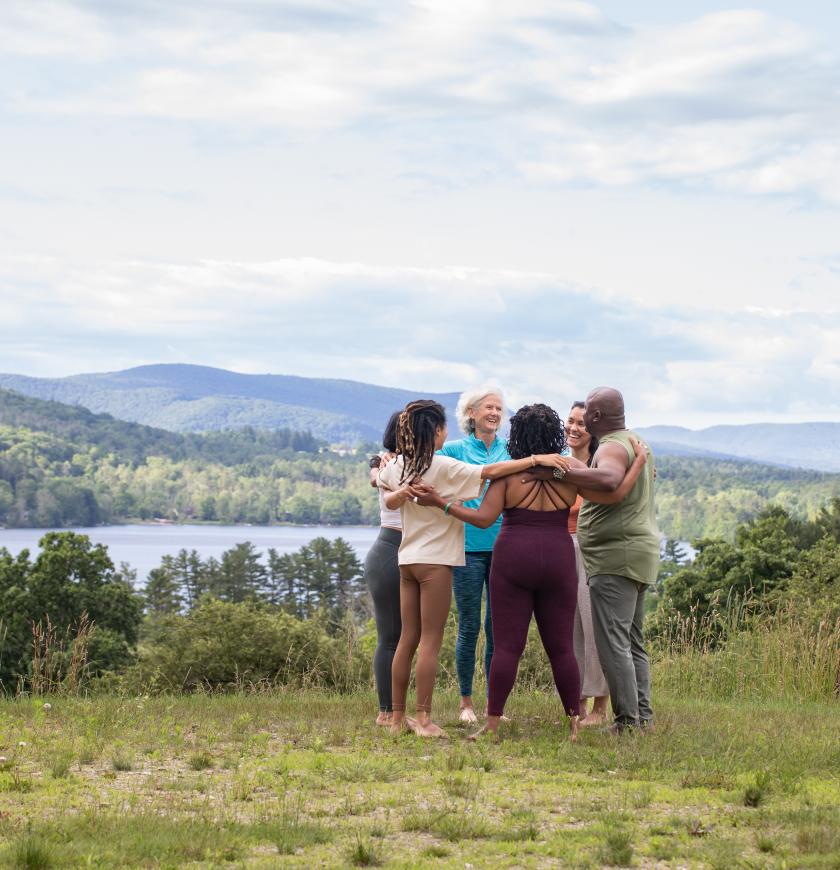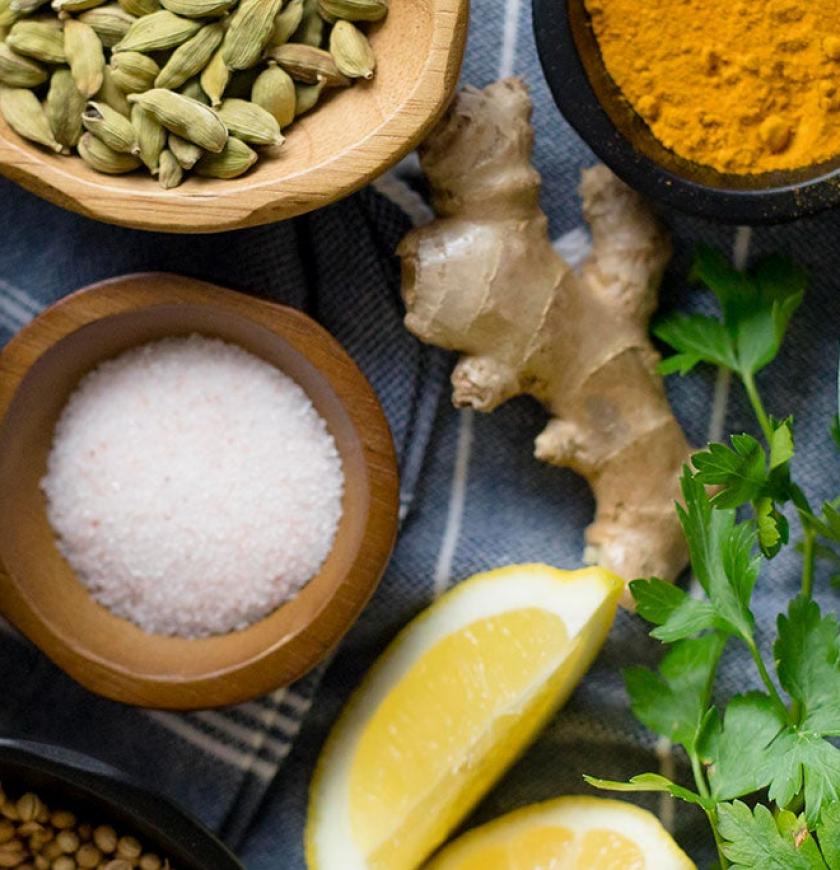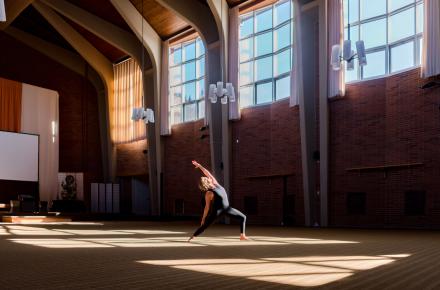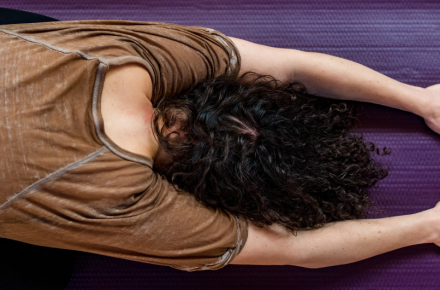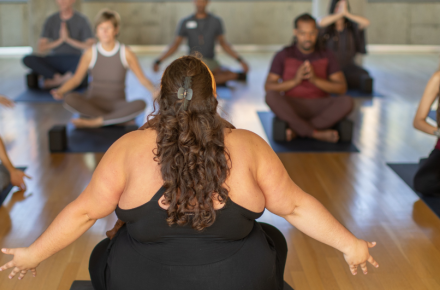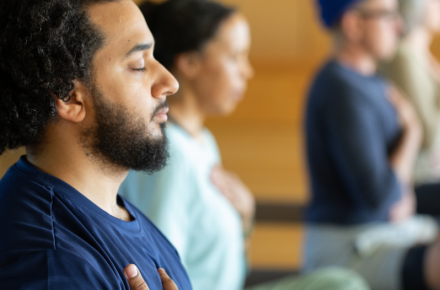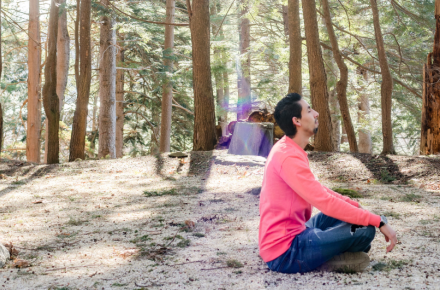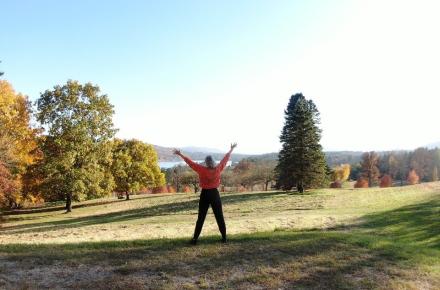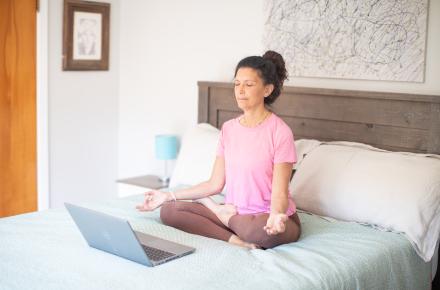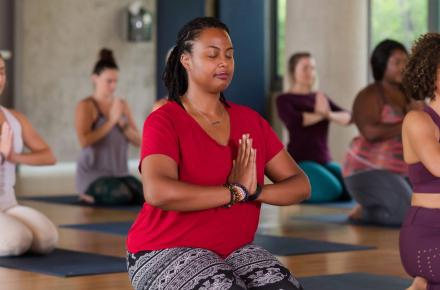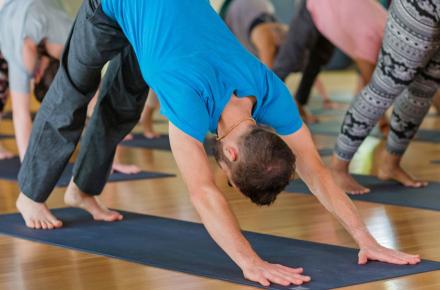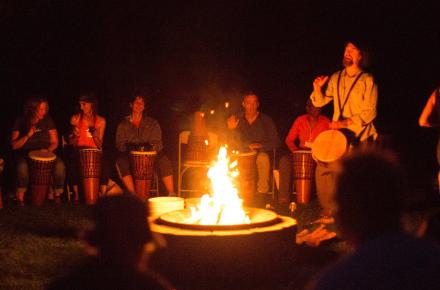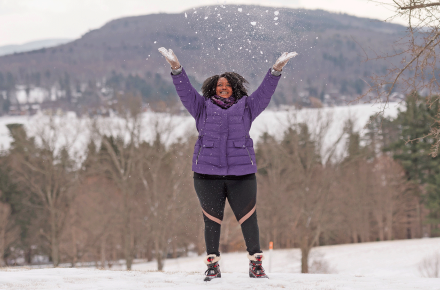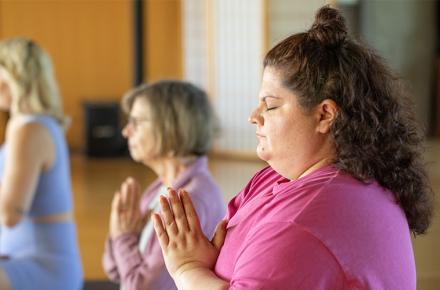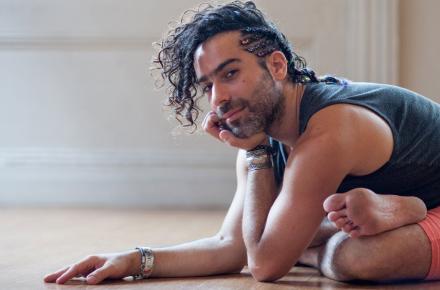I Don’t Wanna Do Yoga: Finding Your Way Around Resistance
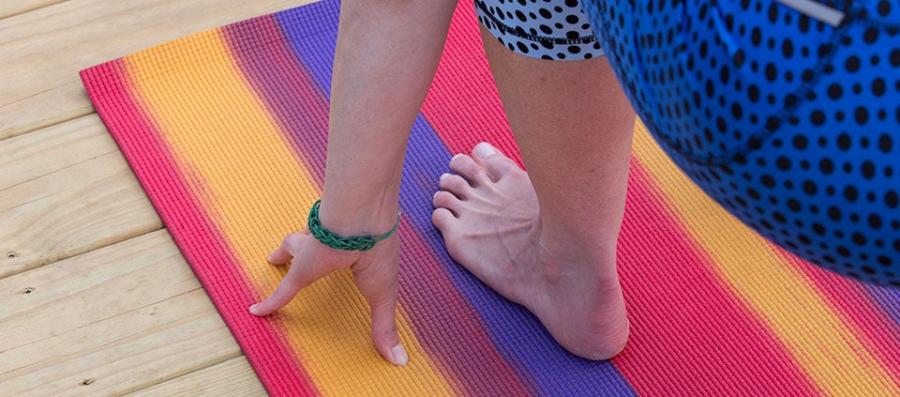
by Valerie Reiss
When I was in my early 20s, a therapist told me I was very resistant—fighting suggestions, arguing insights, ignoring assignments. She was right, so I, of course, wanted to yell, “No, I’m not!”
I’m not sure my resistance has diminished over the years, but I have gotten (slightly) better at working around it, like a river streaming around a giant rock that’s going nowhere. I resist all the usual stuff: exercise, yoga, spiritual practice, work related to my calling, connecting with people I love, etc. Basically, I resist anything that feeds my soul and helps me feel great, self-actualize, and fulfill my life’s purpose. In his resistance-beating classic, The War of Art, author Steven Pressfield says resistance is elicited by “any act that rejects immediate gratification in favor of long-term growth, health, or integrity. Or, expressed another way, any act that derives from our higher nature instead of our lower.”
Yoga, with its ability to enhance our well-being on physical, spiritual, emotional, and intellectual levels, is an absolute resistance magnet—attracting the Platonic ideal of I-Don’t-Wanna. Even the most pumped yoga practitioners have had to drag themselves to the mat at some point, if not each and every time. But oddly, one of resistance’s tricks is that it deceives us into thinking we’re the only ones feeling it. Everyone else in class just floated here on a gentle wave of pure desire to breathe, move, and sweat for 90 minutes. Right?
Thankfully, some straight-talking yogis have come clean. In a refreshing talk, Jonathan Foust (Sudhir), who has been leading yoga retreats and training teachers for 25 years, admits, “Daily practice has always been a challenge for me. One of my deepest confessions has always been that I hate yoga. Every morning the thought appears, I should do some yoga, which is followed instantly by the thought, I hate yoga.The times when I can fire it up and actually do it, what I notice is that, between three and seven minutes, I have a second thought, which is, I love yoga. I should do this more.” And there it is. He’s addressed this mental bear trap by committing to seven minutes of yoga a day. Sometimes it leads to more, but when it doesn’t, he’s okay. He’s met the expectation and done the thing that feels good. Jonathan: 1, resistance: 0.
There’s something about Kripalu Yoga that might make it extra attractive to resistance. “We’re asking ourselves to really feel when we practice,” says Michelle Dalbec, a Kripalu Yoga instructor and teacher trainer. “And, in the times when I’m overwhelmed with feeling and I want to shut down, I don’t want to do yoga. For me, that’s part of the resistance—I’m going to have to feel stuff if I do this. But the saying, ‘What we feel, we are able to heal,’ is really true.” Like Jonathan, she commits to a small dose of daily yoga, keeping a Swami Kripalu quote in mind: “Even a little bit of practice is of the utmost importance.” “I set my sights super-low,” she says. “I say, ‘I’m going to get on the mat and do 10 minutes of yoga,’ and I just do warm-ups and move in a way that feels good for my body.”
Of course, some feel the push-pull of yoga resistance less intensely—and address it with much more than baby steps. “Truthfully, I cannot think of anything I don’t like about yoga, except maybe asana,” says Beryl Bender Birch, a yoga instructor since the 1970s and director-founder of The Hard & The Soft Yoga Institute and the Give Back Yoga Foundation. “Although I have always been an athlete, and it’s pretty easy for me to get out the door to go hiking, running, skiing, biking or whatever, I always encounter a little resistance when it’s time to put down my mat and do asana.” She confronts that pressure by going to her local yoga studio five days a week to practice. “The sangha (community) is supportive and it makes asana fun,” she says. “And asana, when driven by intelligence and not ego, helps keep me healthy, strong, fit, limber, agile, and sane!”
So, everyone meets the resistance monster differently.
Lately, I’ve been meeting my resistance to yoga with a novel on the sofa, or an evening episode of Chopped. I have excellent, unimpeachable excuses: I had a baby recently(ish), and have been dealing with a sacrum injury (from gestating a giant boy) and a shoulder injury (from schlepping said boy and trying to do Chaturangas too soon). I’m freaked out about hurting myself more by doing anything as tricky as even a Downward Dog. See? Who could argue with that? Of course, I could be meditating, which I’m not. Or I could have a regular pranayama practice, which I don’t. “Resistance by definition is self-sabotage,” writes Steven Pressfield.
When the shame of not-doing rises in me like a swamp, I remember this, which is tacked right above my desk: “Every time you judge yourself, you break your own heart. You stop feeding on the love that is the wellspring of your vitality.” That’s Swami Kripalu again. He adds: “The time has come. Your time. To live, to celebrate, and to see the goodness that you are. You, my child, are divine. You are pure. You are sublimely free. You are God in disguise, and you are always perfectly safe. Do not fight the dark, just turn on the light, and breathe into the goodness that you are.”
I bathe in that, and resistance shrinks. The good news is that resistance is not the strongest force in the universe. Love is more powerful. The soul is bigger. And doing the good thing that you actually adore dissolves resistance to nothing—in seven, 10, or 90 minutes—whatever you can spare to become the river flowing around the rock, going where you need to go.
Valerie Reiss is a writer, editor, speaker, consultant, and Kripalu Yoga instructor whose work has appeared in The New York Times, Newsweek, The Huffington Post, Women's Health, Natural Health, Yoga Journal, Beliefnet, Vegetarian Times, and more.
© Kripalu Center for Yoga & Health. All rights reserved. To request permission to reprint, please e-mail editor@kripalu.org.
